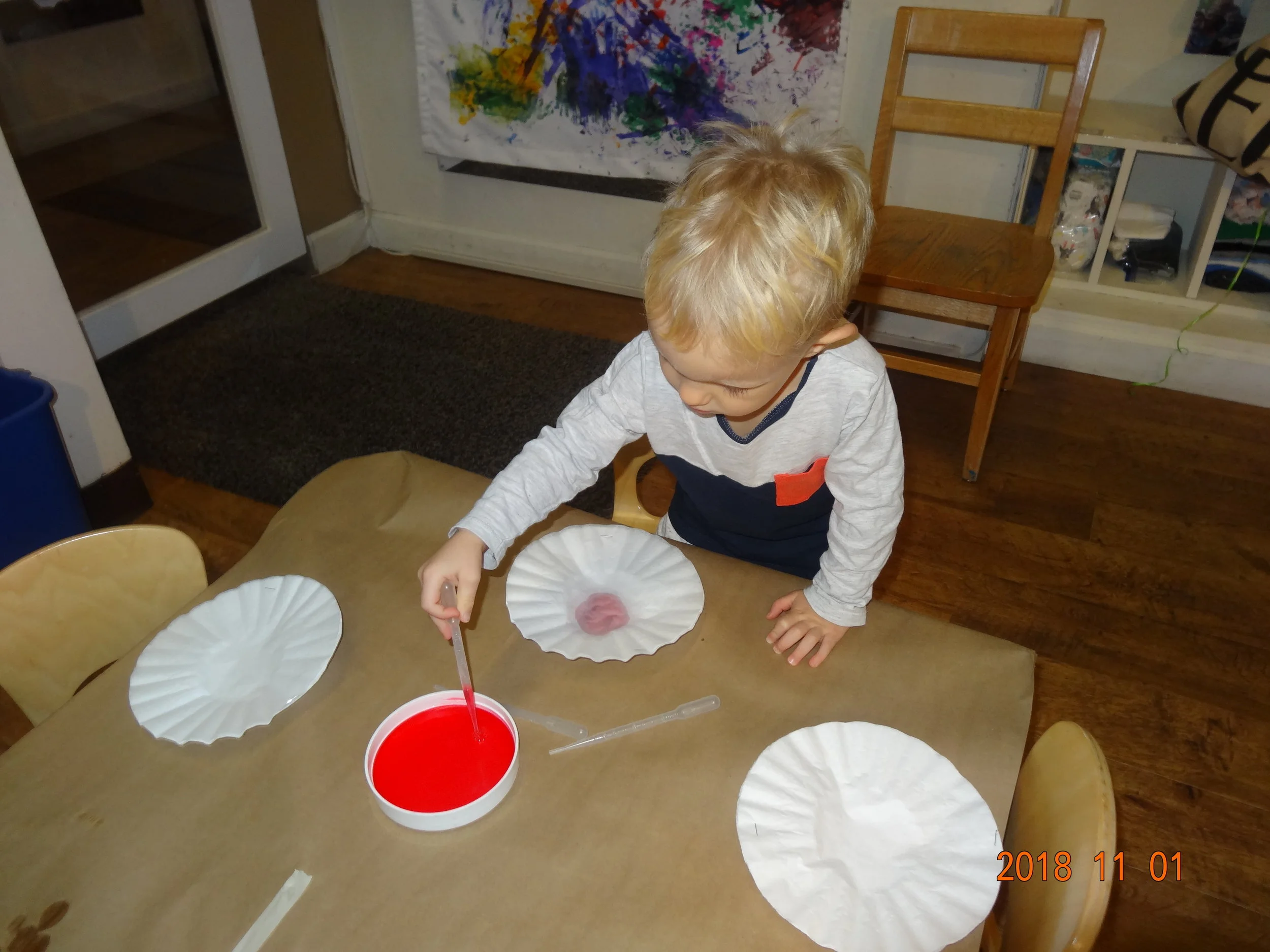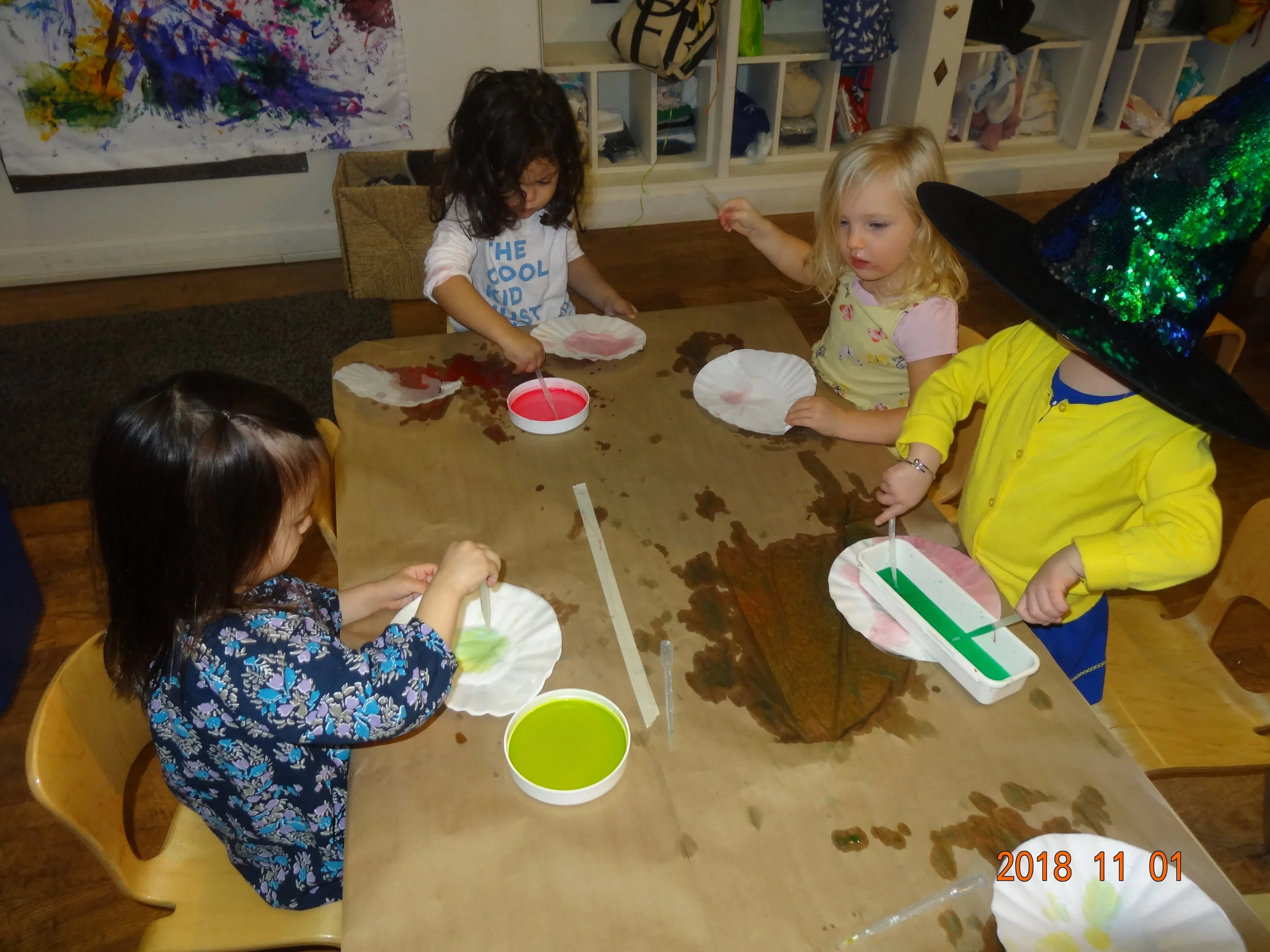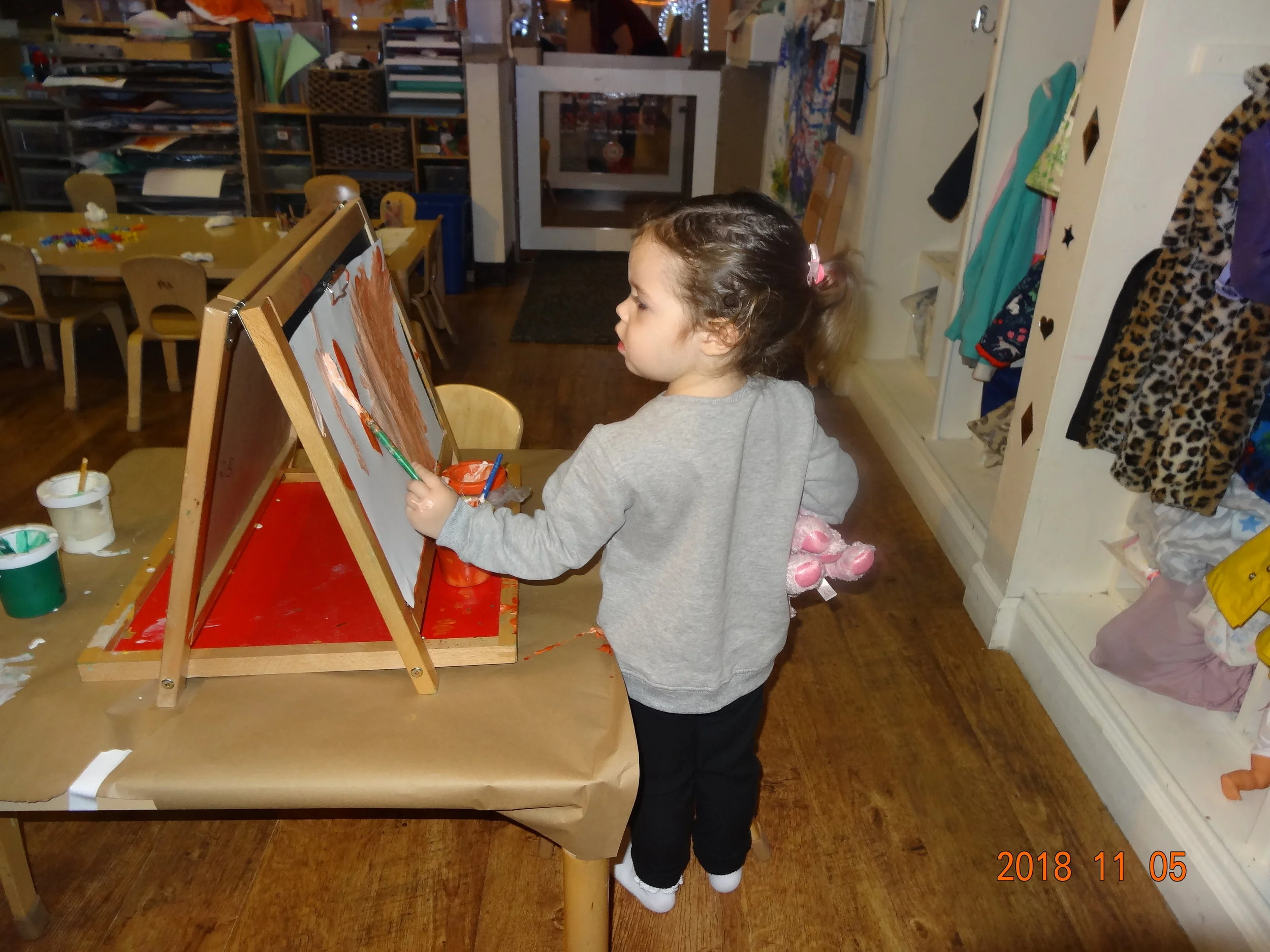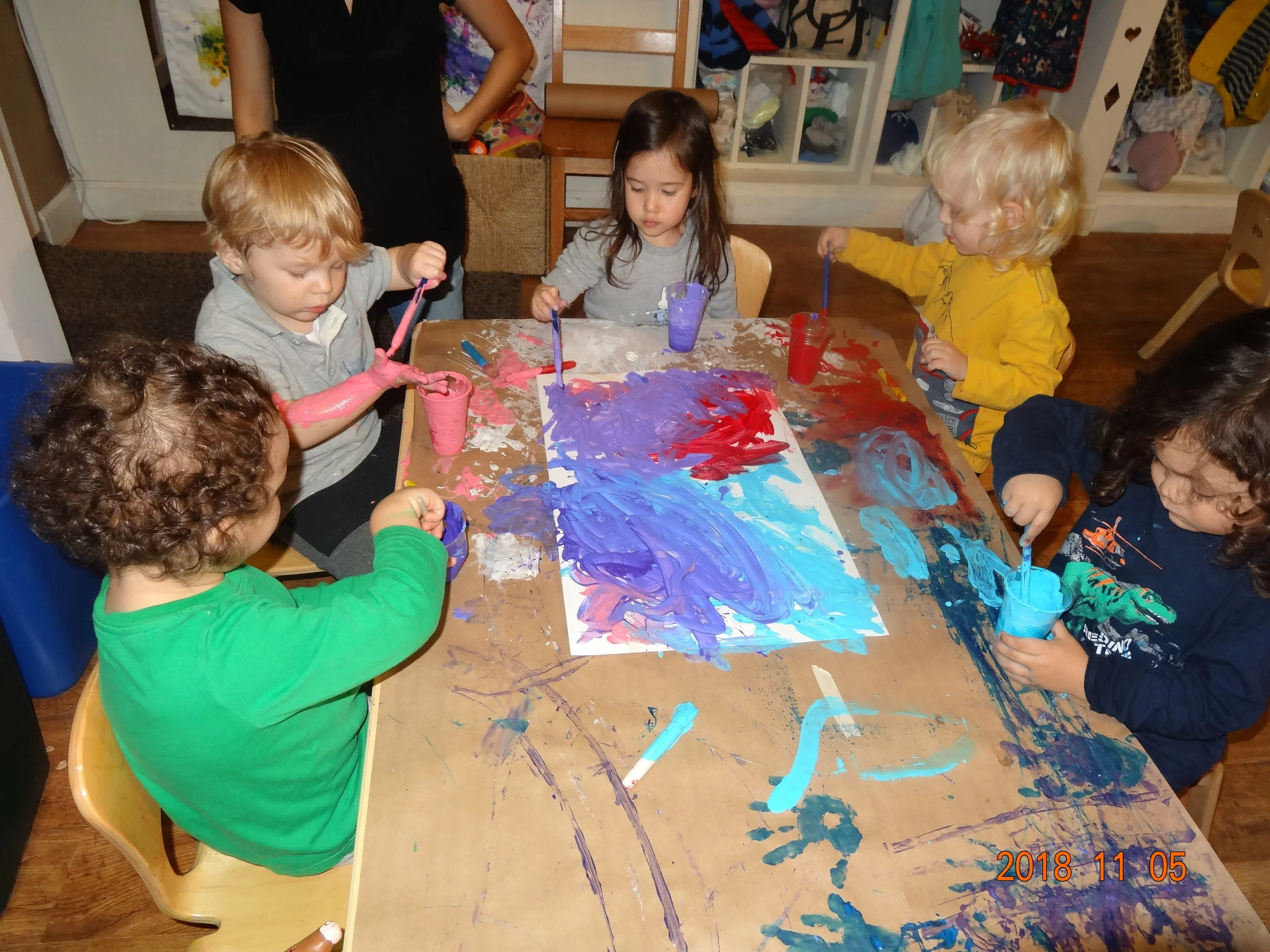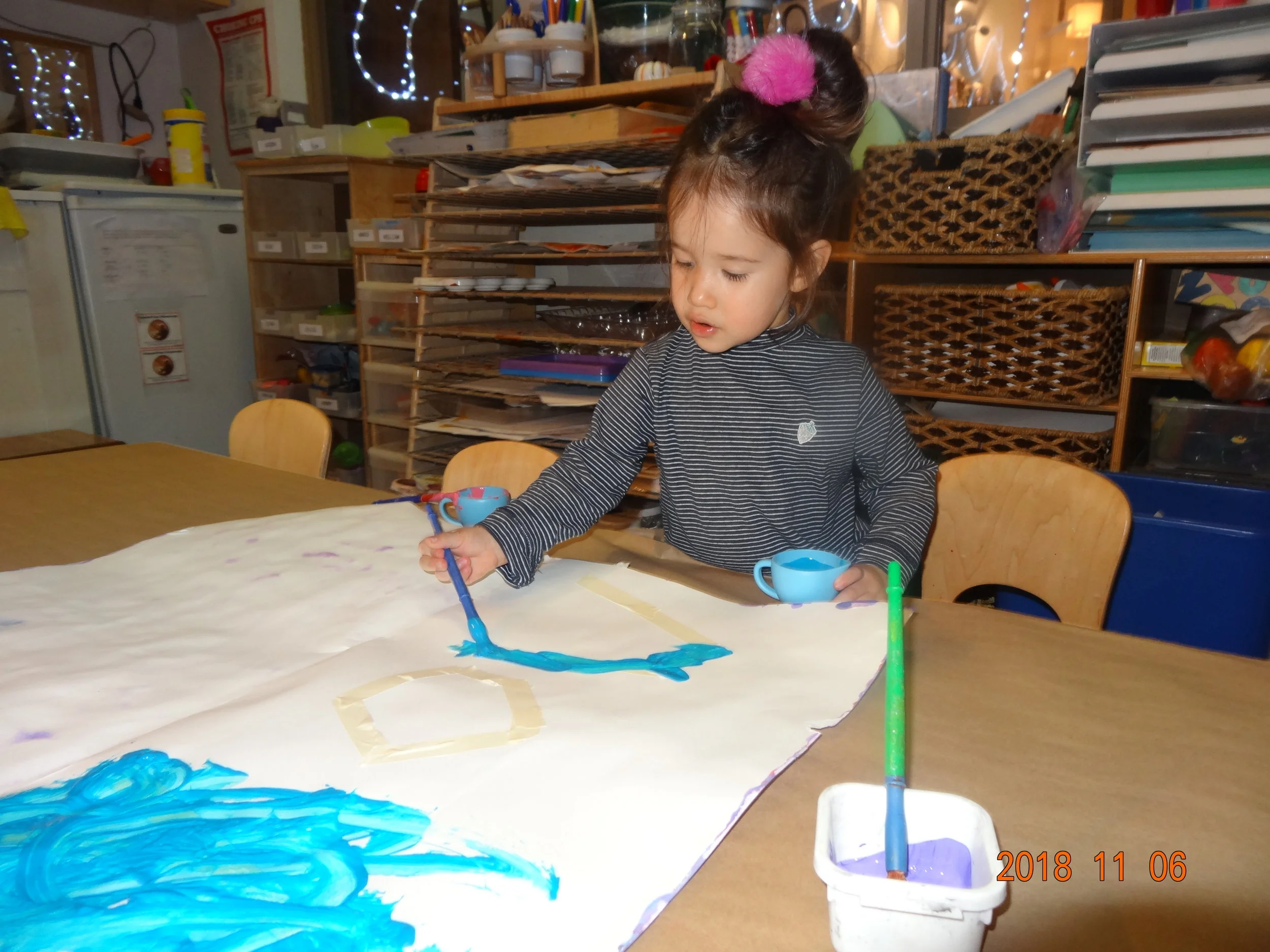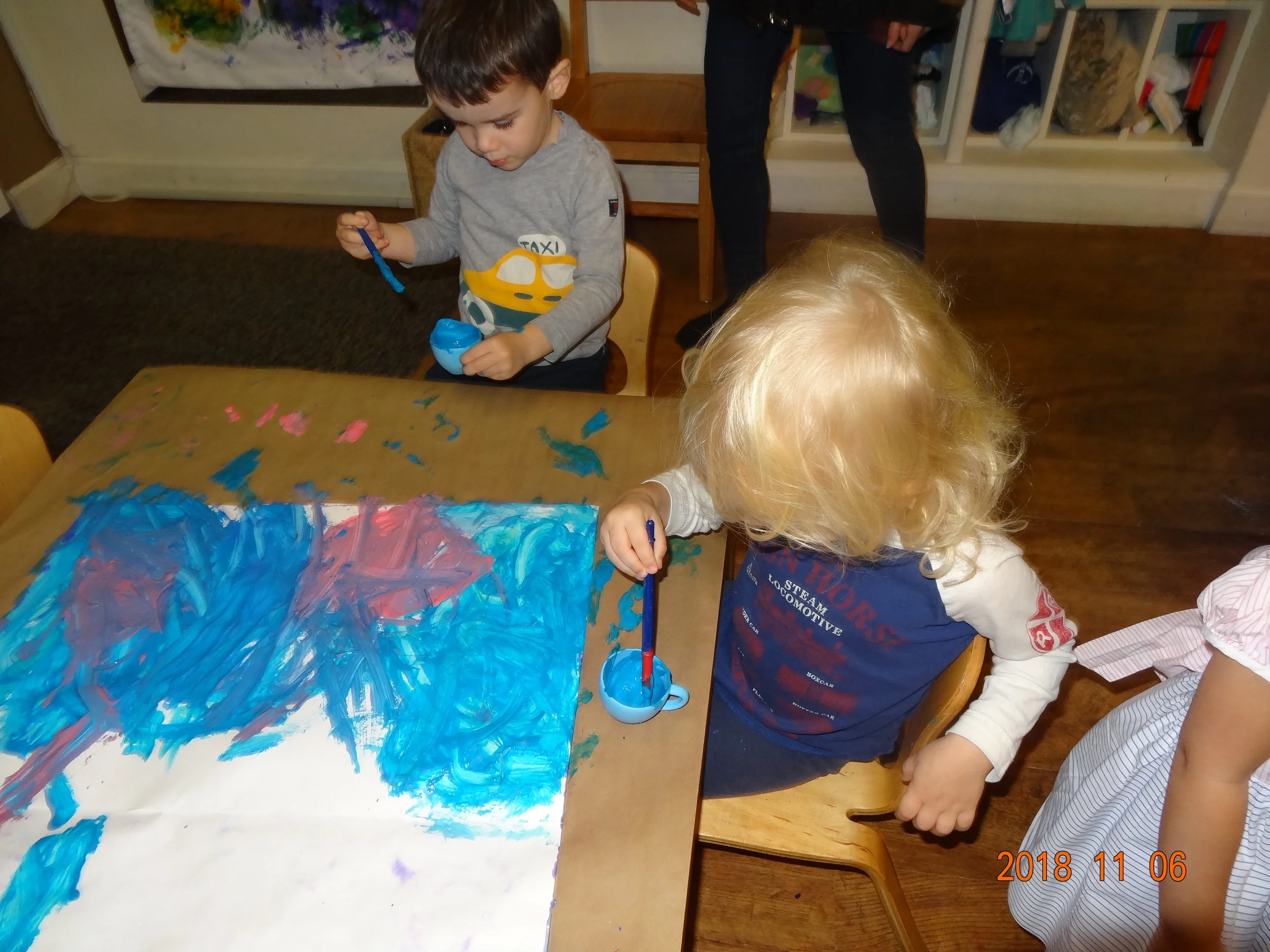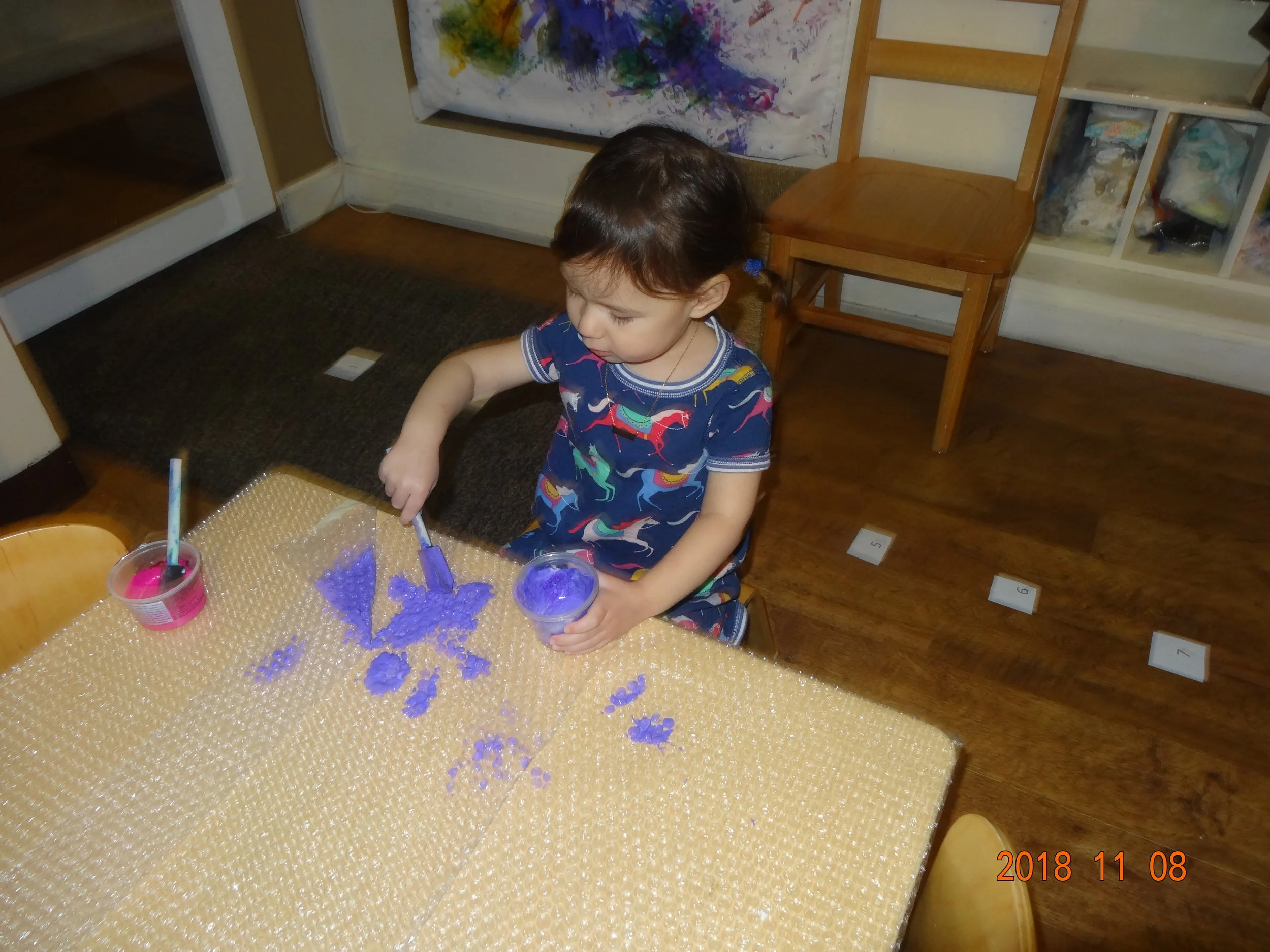As we’ve been exploring paint through the school wide intent, we have been thinking and researching different related questions. One big question lately that has been on our minds is how we can interest the students in participating in paint. More specifically, what inspires the students to engage in a painting activity and what makes them more resistant to joining in. These questions have come to mind as we noticed that many times when painting was set out as a provocation in the morning, not many students would partake in it, or if they did, only for a moment or two. This struck us as odd considering most children their age, enjoy using and exploring paint.
We began to think about the different factors at play. One barrier we realized fairly quickly was the smocks. Some students were interested in painting but were turned off by the idea of putting on a smock and left. Once we stopped requiring the students to wear smocks, more were willing to try paint, though still not as many as we would have thought. One way we got the students interested, which we detailed in last week’s blog, was by incorporating the students in the whole process (from set up to exploration). We also realized that the students were also more willing to try paint later in the day, with the chairs taken away from the tables. With the staggered arrival times, students will often be alone at a table, which causes them to leave to seek out peers to engage with. However, when the students are painting later in the day, it is a big group activity and many more students are willing and excited to join in.
While we were happy to have the students engaging with paint during the later time of the day, we were determined to solve the puzzle of what would inspire the children to paint in the morning. Last Friday and this past week, we began to figure out one way that would work: individual paint cups. Prior to this week, when setting out paint, we would often put out just a tray or two with paint for everyone to share. This week, as we chose to paint with many colors, it worked out that each child painting at the time had a cup to themselves and they stayed and were very engaged with the process. They next few days, we replicated this plan and placed small containers with paint at each spot with a brush. Many children selected to paint and worked hard to create the given projects. At both school and home, the children are required to share their toys, books, etc and they appreciate the opportunity once in a while to have something just to themselves.
Our hope is that by getting the students more interested and comfortable in engaging with paint all times of the day, that eventually we can turn back to the group paint sharing. For now, though, we don’t mind that this is a time of day where they don’t have to share. We will continue to examine and reflect on the different ways that the students interact with paint, focusing on how they approach the paint, what tools they use, and more. If you have any questions you would like us to think about when regarding paint in the classroom, please feel free to share them with us.


